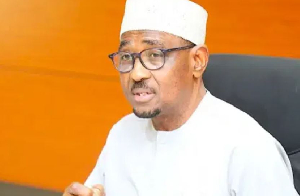The effective implementation of Act 1015 which addresses corporate insolvency is expected to help deal with the current stock of non-performing loans within the banking sector, Mrs. Elsie Addo Awadzi, Second Deputy Governor of the Bank of Ghana has said.
Speaking at the Ghana Association of Restructuring and Insolvency Advisors (GARIA) Webinar on the Corporate Insolvency and Restructuring Act, 2020 (Act 1015), Mrs. Awadzi said, the legislation will provide incentives for market-based solutions to the perennial problem of limited access to credit.
“Act 1015 therefore holds promise for helping to deal with the NPL overhang, through effective debt workouts and other modes of restructuring to help creditors recover on their claims while giving debtors a chance to reorganize their economic and financial affairs,” the Second Deputy Governor said.
“This will no doubt, enhance market discipline and provide incentives for market-based solutions to the perennial problem of limited access to credit,” she added.
In 2019 alone, banks had to write off bad loans worth GHc 1.6 billion which they had fully provisioned for in line with accounting practices and regulatory requirements.
Effectively, this impairs the balance sheets of banks and other commercial lenders, limits their ability to support economic growth with more credit, and puts depositors’ funds at risk due to the capital shortfalls that ensue.
Mrs. Awadzi said, “we see it [Act 1015] as an important addition to the framework for building a more buoyant economy, supported by a more efficient credit market. The recent banking sector cleanup has provided impetus for a more robust credit environment, as banks are now better capitalized and more liquid, than before.”
Access to credit, however, remains a challenge to many economic actors due in part to legacy non-performing loans on the books of banks and Special Deposit Taking Institutions (SDIs) given the challenges they continue to face in their loan recovery efforts.
Business News of Friday, 28 August 2020
Source: goldstreetbusiness.com
Insolvency Act to deal with bad loans burden
Africa












